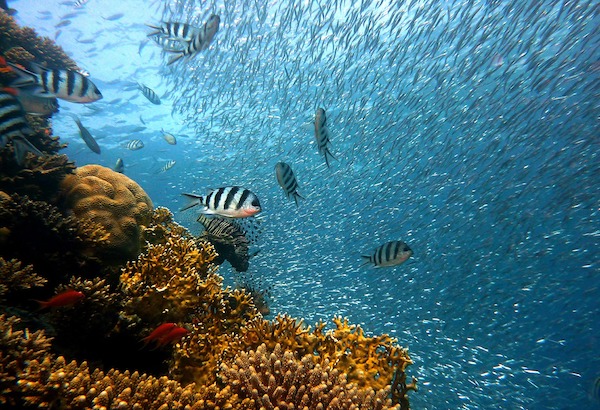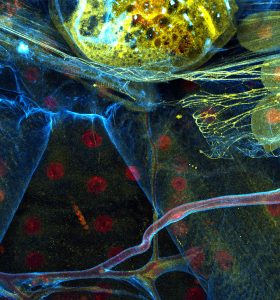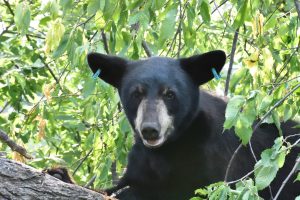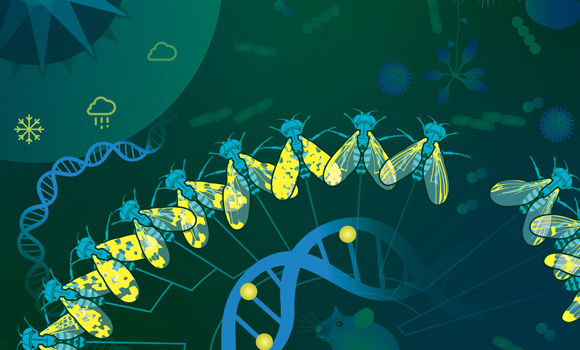How does the environment play a role in biodiversity?

In 2020, a few weeks before much of the world came to a standstill as a consequence of the COVID-19 pandemic, we held the symposium titled ‘The Organism and its environment’ where we talked about the impact the environment has on biodiversity and the role of research in solving global challenges.
The last three years have served as a powerful reminder for how much our lives are influenced by our biological environment. The topic of the symposium has also become even more relevant, as it has become increasingly clear that the climate catastrophe is paralleled by a similar catastrophe threatening biodiversity, which in turn is highly dependent on the interaction of organisms with their environment.
At the next upcoming EMBO | EMBL Symposium about ‘The Organism and its Environment (9 – 12 May 2023) we will learn how climate change is exacerbating biodiversity loss, and vice versa. Here we talk to the Scientific Organiser and EMBL Director General Edith Heard about the impact the environment has on biodiversity and the role of research in solving global challenges.
Does the environment play a large role in the creation of biological diversity?
Biodiversity is the variety of life on Earth. This life, in all its shapes and sizes, occurs in the context of ecosystems: it relies on and interacts with other organisms and the physical environment. Biodiversity represents the collective ‘knowledge learned’ by evolving species over millions of years, about how to survive the vastly varying environmental conditions Earth has and is experiencing. These varying environmental conditions cause natural variations in biodiversity, as well as genetic and epigenetic changes, within and between species over time. Today, scientists are trying to understand the basis of these natural variations, as they will allow us to understand how life evolves.

But biodiversity is also a measure of the health of any ecosystem. Recent trends in biodiversity loss show very clearly that humans are destroying ecosystems on a massive scale. According to the Director General of the World Wildlife Fund (WWF), increased pollution, deforestation, climate change and other manmade factors have created a “mind-blowing” crisis. The WWF Living Planet Report 2018 (WWF LPR, 2018) also states that freshwater fish populations have declined by more than 80% on average since 1970 and half of the world’s shallow water coral reefs have been lost in the last 30 years (WWF LPR, 2018). Alongside this, deforestation of tropical rainforests means we are currently losing more than 100 species of plants and animals a day (Holley, 2017). In short, human’s influence on the environment greatly impacts biodiversity and we are currently burning the library of life.
How can you determine the effect of the environment on an organism?
The environment can affect an organism in a multitude of ways. The impact can be transient or longer term; within an individual or across generations. The environment can also lead to molecular, cellular, physiological or behavioural changes. For example, the expression of genes in an organism can be influenced by the external environment, such as where the organism develops or factors associated with where it is located. Gene expression could also be influenced by an organism’s internal environment, including hormones or metabolism. Finally, the genome itself – genetic factors that vary between individuals in natural populations – could also influence gene expression.

Untangling the impact of genetic and environmental variation can be very challenging and for a long time, scientists have tended to focus on minimising variations in the environment in order to understand how changes in genotype affect phenotype. This, alongside the deeply embedded “one genotype = one phenotype” metaphor, has meant that environmentally induced phenotypic variation has been ignored in favour of ‘‘more useful and precise’’ study of genetic polymorphisms. This is despite the fact that from as far back as the early 1900s, scientists have known that the phenotype of an individual depends on the interaction between its genotype and environmental cues! Today, we finally have the power to consider the impact of the environment on phenotype. We can make precise measurements at the molecular, cellular and organism scales in controlled environments that can be varied and we can sequence genomes at the same time.
We can also take human data paired with environmental data – for example in the context of some of EMBL’s research interests such as infectious disease and microbiomes – to understand the quantitative effects of the environment and its influence on human biology. Pioneering projects such as Tara Oceans have also allowed us to research the interactions between organisms and the environment by generating reference data, discovering emergent ecological principles and developing predictions about how ecosystems will be affected by a changing environment. Understanding how organisms exist together and in changing environments is of fundamental importance for our understanding of biological principles and our knowledge of life.
What challenges are currently being faced in this field?

Understanding the behaviour of individual molecules, cells or whole organisms is already challenging. Understanding how the environment influences an organism – or populations of organisms – represents a whole new scale in complexity. This is an area that I think EMBL could uniquely contribute to in the future. It will be necessary to shift from researching organisms mainly in the laboratory to studying them in their environment. We will also need to ensure the rapid development of technologies and tools to meet these scientific needs. Alongside this, we need new approaches to integrate large, complex data sets and make sense of them. To rise up to this challenge, we need theory. We are now in a unique position to address the dynamics and complexity of living matter across multiple scales and in the context of changing environment. But we need theory to address societal and planetary issues too. We must aim for a rate of scientific discovery that outpaces the rate of calamity such as biodiversity loss, ecosystem degradation, epidemics and climate change.
What can be done to prepare for the future with regard to biological diversity, the organism and its environment?
Research, research and more research! Environmental problems such as the hole in the ozone layer or acid rain were solved by sound scientific approaches. We need to learn from these past scientific and societal successes. Today the ever-increasing numbers of new technologies are allowing us to collect, measure and store data at unprecedented scales. We also need to bring ecologists, zoologists, population geneticists and environmental experts together to address these research questions. Together we can apply cutting-edge technology with rigour, attract new scientific talent and disseminate knowledge to global communities.
What inspired you to organise this symposium?
As a geneticist and epigeneticist, I have explored the intersection between genotype and the environment and how that produces a phenotype. From observing many areas of research – ranging from social insects such as bees and ants, to plant vernalisation and variations between identical twins – I felt that the time is ripe to bring together scientists from many different areas. I also wanted this to be a symposium that would attract scientists from different areas to EMBL.
At EMBL, we want to understand the molecular basis of life. Until now, EMBL has been known for exploring genomic, molecular, structural and cell biology at the level of individual organisms. Looking ahead, we want to study organisms in the context of their physical and biological environments – not just in isolation. In order to truly understand life on Earth, we need to study organisms in nature, not just in the lab. One way to understand life at the molecular level will be to try to bring relevant ecosystems back to the lab, to measure and perturb them under controlled conditions. The speakers we’ve invited are experts from many different areas of biology or ecology, and will bring exciting new perspectives to our research.

What is the greatest benefit of this symposium for the scientific community?
The symposium is an opportunity to address how organisms are influenced by a changing environment. It will bring together different research disciplines and go beyond pure genetic or ecological perspectives of phenotypic variation. Geneticists, molecular biologists, evolutionary biologists and ecologists do not necessarily meet under ordinary circumstances. This meeting will enable such interactions and cross-fertilisation.
What will be the main highlight of the symposium?
Today we are in a unique position to address the complexity and dynamics of life at multiple scales, from molecules to ecosystems. We also need to consider the idea that change – including in the environment – is not necessarily a bad thing. After all, without change, evolution could not occur and none of the amazing biodiversity of life on our planet would exist! I hope that a highlight of this symposium will be some wonderful new insights into evolutionary processes.
References
Holley D., (2017). General Biology II, Organisms and Ecology. Indianapolis: Dog Ear Publishing, 898.
World Wildlife Fund, (2018). Living Planet Report: Aiming higher [PDF] https://wwf.panda.org/knowledge_hub/all_publications/living_planet_report_2018/ [Accessed 25 July 2019].
However the WWF DG is quoted by several articles as describing the crisis as mind-blowing, for example: “https://www.voanews.com/science-health/report-earth-has-lost-60-percent-its-wildlife-1970